This step by step project is about herb planter box plans. Building a small herb planter for your kitchen or patio is a quick project that can be done by anyone irrespective of their budget or woodworking skills. We strongly recommend you to adjust the size and the design of the planter before starting the construction project, in order to suit your needs and to fit the size of the kitchen.
On the other hand, we recommend you to invest in the vest materials you can afford, such as pine, redwood or cedar. Don’t forget to take accurate measurements before adjusting the size of the lumber. In addition, drill pilot holes through the components before inserting the screws into the framing and align them at both ends in a professional manner. Work with attention and with great care to avoid mistakes throughout the project. See all my Premium Plans HERE.
Projects made from these plans
Cut & Shopping Lists
- A – 4 pieces of 2×2 lumber – 30″ long LEGS
- B – 2 pieces of 2×2 lumber – 21″ long SUPPORTS
- C – 2 pieces of 2×2 – 19 1/2″ long, 3 pieces of 1×6 lumber – 24″ long SHELF
- D – 5 pieces of 1×6 – 22 1/2″ long BASE
- E – 2 pieces of 1×6 lumber – 25 1/2″ long, 2 pieces – 24″ long BOX
- F – 2 pieces of 1×2 lumber – 25 1/2″ long, 2 pieces – 27″ long TRIMS
Tools
![]() Hammer, Tape measure, Framing square, Level
Hammer, Tape measure, Framing square, Level
![]() Miter saw, Drill machinery, Screwdriver, Sander
Miter saw, Drill machinery, Screwdriver, Sander
![]() Post hole digger, Concrete mixer
Post hole digger, Concrete mixer
Time
Related
Herb Planter Box Plans

Building a herb box
Top Tip: Building a small herb box with storage space is a good idea, if you like to spice things up with herbs from your own backyard. Even if you have a small apartment you can grow your own herbs.
Building a herb planter box
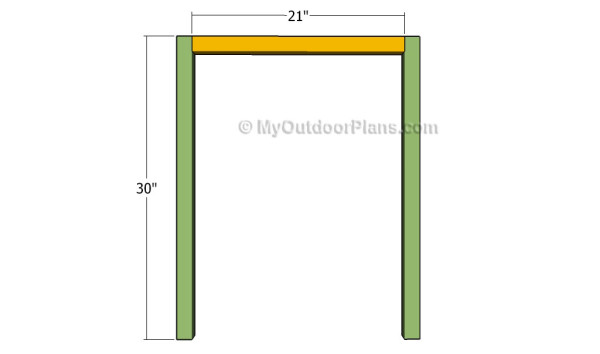
Building the sides of the table
The first step of the project is to build the sides of the herb planter box. As you can see in the image, you can get the job done by using 2×2 lumber. Cut the components at the right size and lock them together with 2 1/2″ galvanized screws and waterproof glue.
Male sure the corners are right-angled before inserting the screws into the supports. Align all the components at both ends, if you want to get a professional result.
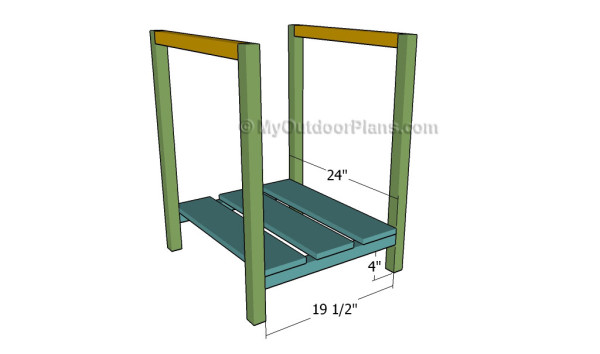
Attaching the bottom shelf
Continue the woodworking project by attaching the bottom shelf to the wooden structure. Secure the cleats to the both sides of the planter and lock them tightly into place. Use a spirit level to check if the cleats are perfectly horizontal. Drill pilot holes through the legs and insert 2 1/2″ screws into the cleats.
Top Tip: Attach the 1×6 slats to the cleats, as shown in the plans or any other way that suits your needs. Pre-drill the slats before driving the 1 1/4″ screws into the cleats.

Attaching the base of the box
In order to build a strong and durable base for the planter, we recommend you to fit 1×6 slats over the supports, as shown in the plans. Align the components at both ends, apply waterproof glue between them and lock them into place with 1 1/4″ screws or nails.
Work with attention and make sure you leave no gaps between the slats, otherwise the project won’t have a professional edge. Smooth the edges and countersink the head of the screws. Cut the side strips from 1×6 lumber, making sure you adjust their width to 1″.
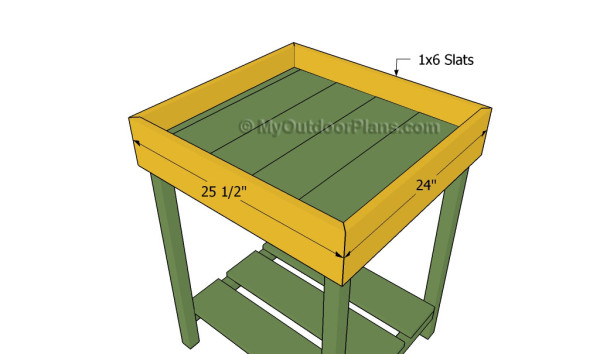
Building the box
One of the last steps of the project is to build the actual herb planter box. As you can see in the image, cutting both ends of the components at 45 degrees will help you build a planter with a nice appearance.
After assembling the box on a level surface and making sure the corners are right-angled you should continue the job by attaching it to the base. Level it with a spirit level and lock it into place with 1 1/4″ finishing nails.
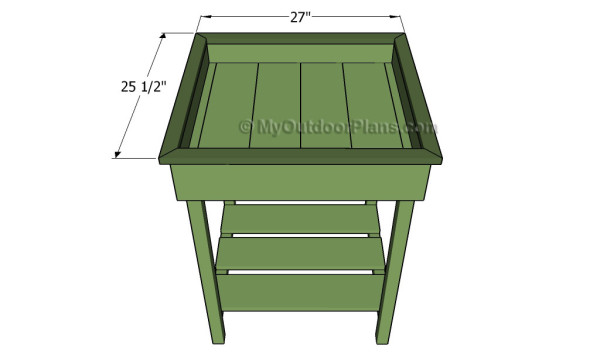
Fitting the trims
If you wan to enhance the look of the herb planter box, we suggest you to attach 1×2 trims to the top of the box. Lock the trims to the box with waterproof glue and several finishing nails.
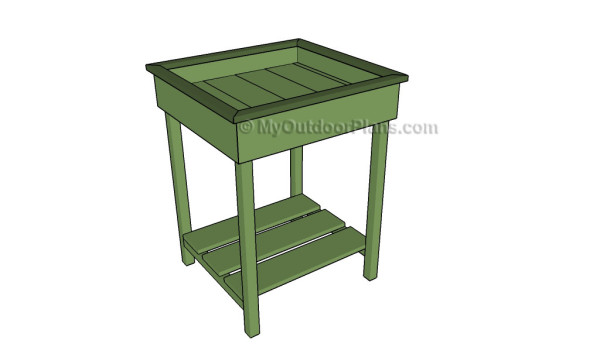
Herb planter box plans free
Last but not least, you should take care of the finishing touches. Therefore, we recommend you to check if all the components are locked into place properly, as well as if the screws are inserted properly.
Top Tip: Fill the holes with wood putty and smooth the surface with medium-grit sandpaper along the wood grain. Make sure you clean the residues before applying several coats of paint or stain.
This woodworking project was about herb planter box plans. If you want to see more outdoor plans, we recommend you to check out the rest of our step by step projects. LIKE us on Facebook and Google + to be the first that gets out latest projects.
